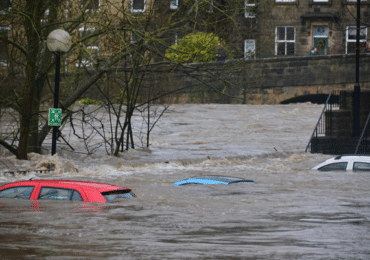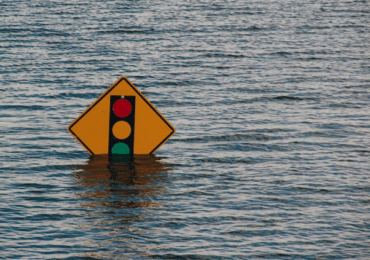If you’ve recently experienced a flood in your commercial space, the first thing to remember is to stay calm. While flooding certainly can be devastating and cause damage that takes time and money to repair, following these essential steps as quickly as possible after the water subsides can help minimize disruption to your business’s operations. Taking proactive action during such a trying time is key—from keeping inventory safe to deciding how best to proceed with clean-up efforts – for reducing damage and getting back on track faster. Read on for more details about what must-dos are essential immediately post-flooding of a commercial building.

Immediately contact your insurance provider and inform them of the damage
There’s nothing quite as unsettling as discovering damage to your property—especially when you weren’t expecting it. But the faster you get in touch with your insurance provider and provide them with all the necessary information, the sooner they can begin assessing how much of the damage is covered by your policy. Whether you need a responsible commercial demolition company or a certified contractor, your insurer will help you figure out the best way to restore your commercial property. When dealing with them, try to have a complete record of the damage and any repairs you’ve already done. This includes photos, videos, and a detailed description of the damage.
Take pictures of all affected areas to document the extent of the flooding
The importance of documentation cannot be overstated. Taking pictures and videos of the affected areas can help you prove your case to your insurance provider. This is also essential for tracking inventory, filing claims, and determining which items are salvageable versus which need to be replaced. Remember to take photos of both the interior and exterior of the property, as water damage often seeps into places unseen and can cause further damage if left untreated. If the damage is severe, consider hiring an experienced water damage restoration professional to help assess the full extent of the problem. When assessing the damage, be sure to call in any professionals needed to inspect HVAC systems, electrical wiring, and other vulnerable areas. It’s also important to consider any potential health hazards associated with flooding, such as mold or hazardous materials.
Remove any standing water and use a wet vacuum or pump to get rid of excess water
Removing standing water is a crucial first step in the flood recovery process. Depending on the severity of the flooding, this may be done manually with mops and buckets, or you may require professional help from water damage restoration technicians. Pumps and wet vacuums are also important tools for getting rid of any excess moisture that remains behind after all standing water has been removed. In addition to this, it’s also necessary to properly dry out any materials that have been exposed to water in order to prevent the growth of mold. This can be done with heaters, dehumidifiers, and fans. When drying out the affected areas, be sure to constantly monitor any water levels and take note of any odors or other indications of mold growth.
Clean up and sanitize thoroughly
When it comes to cleaning and sanitizing your commercial space after a flood, it’s important to remember that water damage can sometimes linger long after the flooding itself is over. This is why thorough cleaning is essential in order to ensure that your commercial property remains safe and healthy. Pay particular attention to carpets, rugs, furniture, walls, and other surfaces as these are all prone to mold growth if not properly treated after a flood. Cleaning and sanitizing should also be done with special care to prevent any cross-contamination from occurring. Make sure to use high-quality cleaning products that are designed for use after a flood and properly dispose of all wastewater in order to avoid polluting the environment. It’s also essential to call in a professional cleaning service if the damage is severe or the area is large.
Dispose of any items that are too damaged for repair or restoration
It’s easy to become sentimental when dealing with items that have been damaged in a flood. However, it’s important to be realistic about which items are salvageable and which ones need to be discarded. Any item that was submerged in water for an extended period of time or is showing signs of mold growth should not be kept as these items may cause further damage. Instead, these items should be properly disposed of in order to avoid any further harm. When disposing of these items, be sure to follow all local regulations and ordinances. Commercial waste removal companies can also be hired to help with this process if necessary. They can also assist with the removal of any hazardous materials that may have been released during the flooding.
Contact an electrician
When it comes to flooding, we all know that there are a lot of precautions that we need to take to keep ourselves safe. However, one thing that often goes overlooked is the possibility of electricity running through flooded areas – and how incredibly dangerous that can be. If you have any worries at all about the possibility of electrified water or other hazards, don’t hesitate: contact an electrician right away. These professionals have the tools, knowledge, and expertise needed to assess the situation and take appropriate steps to keep you and your employees safe. So if you’re dealing with flood waters, don’t take any chances. Call in a professional right away and rest easy knowing that you’re doing everything you can to stay protected. When it comes to electrical safety, you can never be too careful.

It may seem like an overwhelming process of recovering from flooding damage, but if you follow these steps you can ensure that your home is safe and secure. Just remember to immediately contact your insurance provider and take pictures of the affected areas, remove any standing water, clean up and sanitize thoroughly, dispose of damaged items that cannot be restored, and contact an electrician if any electricity is running through the flooded areas. If you take all of these precautionary measures following a flood in your business, you’ll have peace of mind knowing you’ve done everything in your power to repair the damages and move forward.

